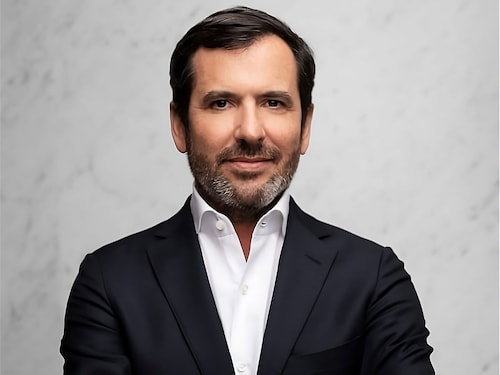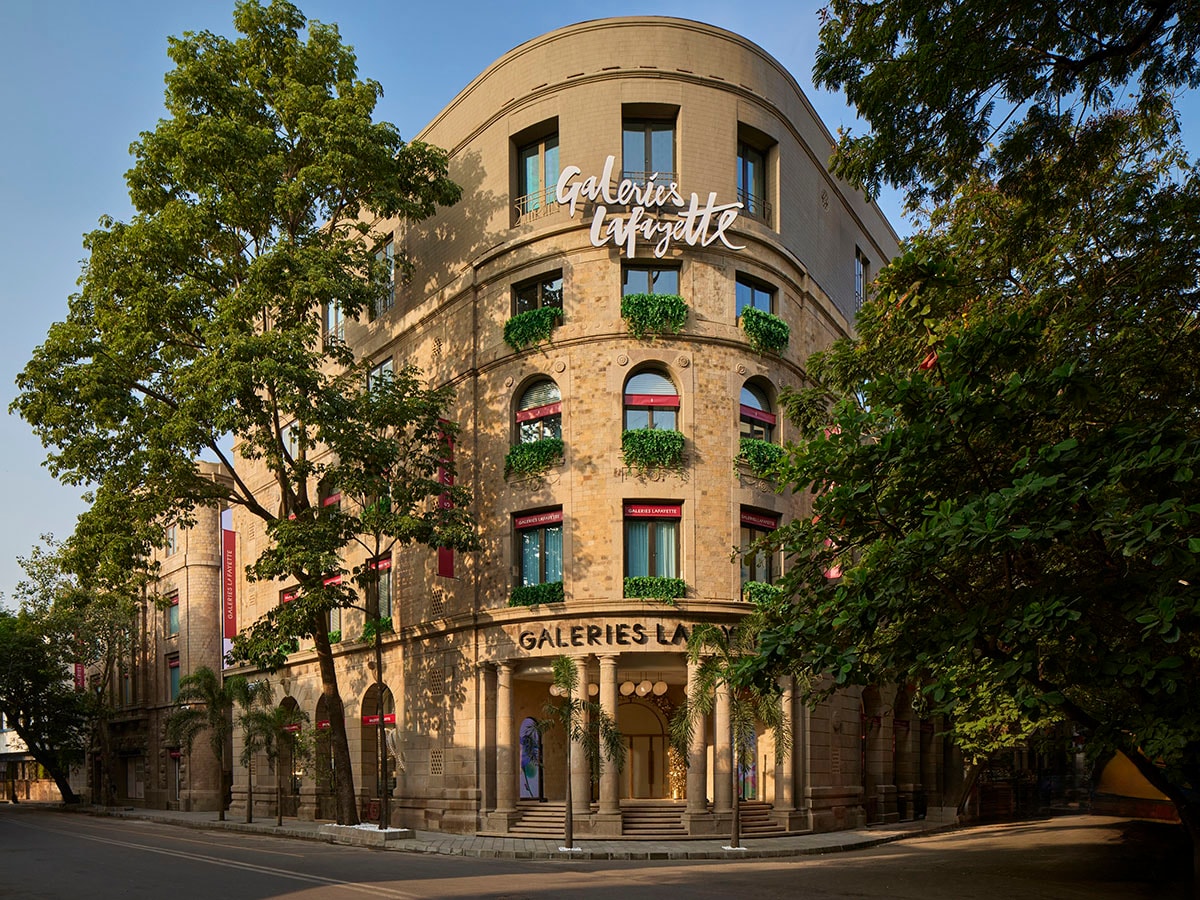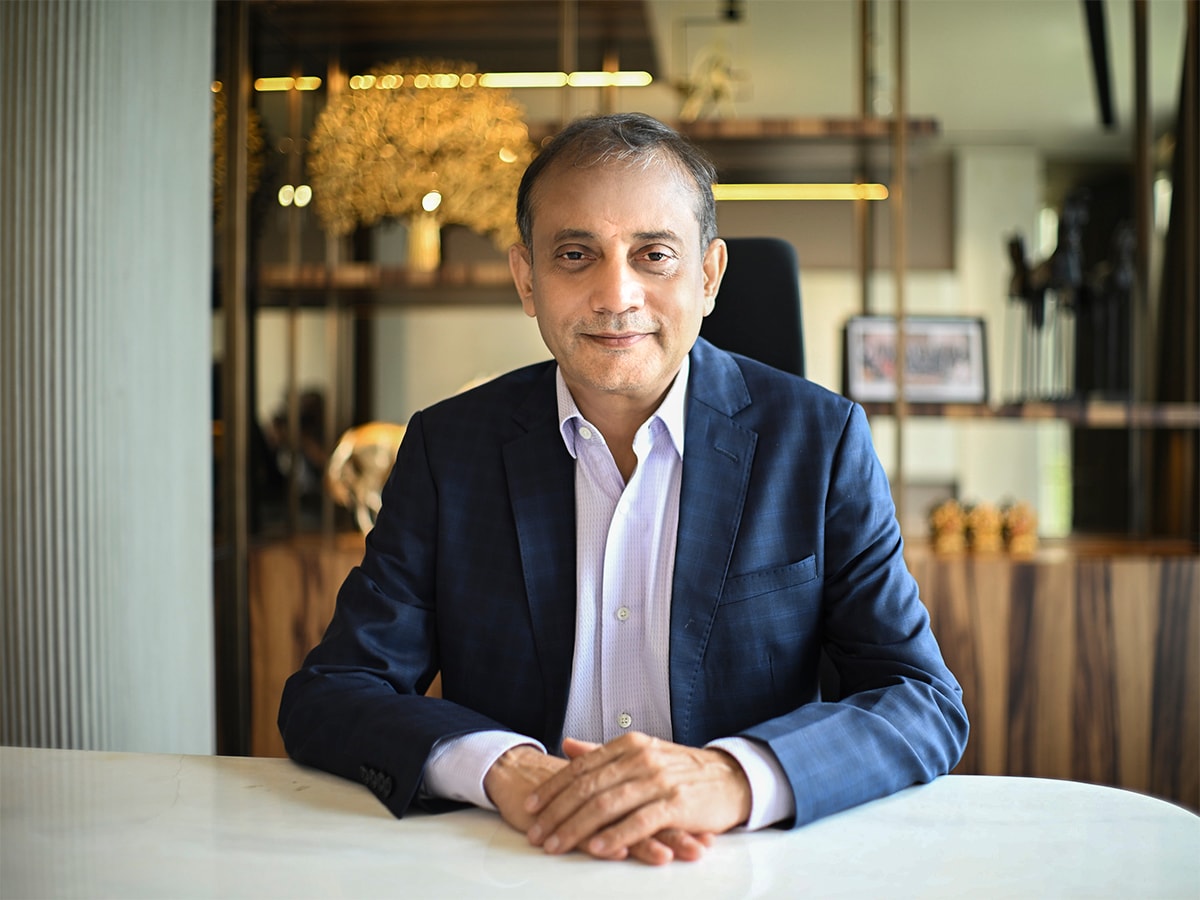Global customers form 60% of our business: Nicolas Houzé of Galeries Lafayette
In Mumbai for the launch of its luxury store, Houzé, executive chairman of Galeries Lafayette Group, talks about how the company is succeeding in challenging times


Galeries Lafayette, the celebrated luxury department store in Paris, is set to open its first Indian store in Mumbai’s Kala Ghoda neighbourhood in early-November. Its offering will include a curated portfolio of more than 250 luxury and designer brands from across the globe. In line with its tradition of offering customers top-of-the-line services, the Mumbai store will offer personal styling, private lounges, concierge services, and curated cultural programmes. The company, which has its flagship store in Boulevard Haussmann in the 9th arrondissement of Paris, has 65 stores (including franchises) across the world, with outlets in Doha, Dubai, Jakarta, Luxembourg, Beijing, Shanghai, Shenzhen and Macau.
By partnering with Aditya Birla Fashion and Retail Limited (ABFRL), the India debut of the 130-year-old French family business venture will occupy 90,000 sq ft across five floors of a heritage building that took about two-and-a-half years to renovate and refurbish. It stands in the midst of a South Mumbai neighbourhood that is home to commercial, colonial-era buildings and an increasing number of flagship stores of Indian couture brands, some of which ABFRL includes in its portfolio of investments.
The company’s India entry comes at a time when the domestic luxury market is projected to reach $85 billion by 2030, driven by rising affluence and aspirational consumption. It also comes at a time when the global personal luxury items segment contracted for the first time in 15 years (excluding the Covid-19 pandemic years).
According to Bain & Company’s 23rd edition of the annual Luxury Study, “the personal luxury goods market dipped to €363 billion in 2024, a 2 percent decline compared to 2023. The trend—particularly acute among Generation Z, whose advocacy for luxury brands continued to decline—has caused the luxury customer base to shrink by about 50 million people over the last two years.” The study adds that global luxury consumers are grappling with macroeconomic uncertainty and continued price elevation by brands.
To address these global challenges and explore new markets and strategies, the privately-held Galeries Lafayette went through a leadership reshuffle a few months ago. Nicolas Houzé, a member of the founding family, was elevated to executive chairman, while his cousin Arthur Lemoine was made CEO. Both were in in Mumbai on October 15 for the launch of the store, along with Ashish Dikshit, managing director of ABFRL. Houzé spoke to Forbes India about the “consumption crisis” that luxury brands are facing, how the experience of a physical store can attract consumers in the age of online shopping, and growing up talking shop at the family dinner table. Edited excerpts:
Q. Yours has been a family business venture for 130 years. What is it really like to ensure that this legacy continues in a world where we see financial institutions and other stakeholders buying into or acquiring old legacy companies?
I'm one of the representatives of the 5th generation [of the family] and you have my cousin [Arthur Lemoine] here, just behind me. He is the new CEO and I'm the executive chairman. And, you know, it's part of our life. We are born within this family, and have always been interested and invested in the business of Galeries Lafayette, but also in other businesses. We started to think about Galeries Lafayette since an early age and today I'm 50, and Arthur is 40, and we are bringing up our children in the same way. We hope that this will continue.
Of course, it's a tough business. Being in the retail is not easy. We've been through many different crises in France and in Europe over the past decades. But, at the end of it, we are still there growing, being a leader in the retail industry and the department store industry in France, and also in Europe. We do it with our heart, with our soul, with our blood.
Q. Has it always been the topic of dinner table conversation?
Yeah. Always, always.
Q. And you never get tired of it?
[Laughs] No, no. Our wives, perhaps, but not us.
Q. Your cousin took over as CEO a few months ago, and you as chairperson. How is this new leadership going to address the challenges that you are facing?
We are stronger with the both of us, compared to being alone. And we are not just the two of us; there are a lot of professional managers, but also other family members. My brother is in charge of image and communication; my father [Philippe Houzé] is still there and he's the chairman of the holding company. He's taking care of the shareholders.
To be honest, there are challenges. If you look at the fashion industry and the luxury market, it's not so easy to do this kind of business at the moment, because there is still a crisis, a consumption crisis. And that's the biggest challenge we have to face.
But still, we think that we as Galeries Lafayette can continue to attract customers not just in France, but also international customers looking at Paris. We are an international landmark for shopping in Paris and it's doing quite well.
Q. Last year, you announced your intent of investing some €400,000 in transforming your stores. What is the plan on that front?
We want to make sure that our stores in France, and also online—not only the ‘brick’ but also the ‘click’—continue to play a role within the fashion industry and to do that we have to make sure that—like it is the case in Mumbai—the location attracts people, because they want to come to see what's happening, the new brands, the new trends, the arts, the new food. It's not only a destination for shopping, but also a source of inspiration. And that's what we want to do; to ensure that we play this kind of a role when we are in France, and also internationally.
Q. You spoke about a consumption crisis. It's been happening across lots of segments, and the luxury segment is feeling it as well. What would you say is really the crisis?
The world went through the Covid-19 pandemic, then we had the war in Ukraine, we have the war in the Middle East—even though for the past few days we think that it's perhaps behind us. People are afraid, and are not willing to buy as much. They don't need a new dress, or a new suit. Consumption is in the middle of a crisis, and we have to make sure that when they come to our store, they will find something new; they will find new brands, new accessories, new fashions.
To be honest, looking at the figures that we are doing in France and internationally, we are ahead of what the market is doing and surpass the competition. So, I think that we're not doing so bad.
Q. How do you attract customers to a physical luxury store in an age when so much of consumption takes place online?
It’s by making sure that the architecture plays a role, that you address the needs of the customers, that you ensure they are getting new services that they can't get online. And of course, it's not online against offline; it's a combination of the two that is the winning formula of doing this business.
During the pandemic, we were closed for 200 days. We were quite afraid about whether people will come back to the store after that. But they did come back. Last year, we did almost the same figures that we were doing before the pandemic. Of course, it's a little different; they are looking for different types of product and services.
At our flagship store in Paris, which is our the biggest, spread over 700,000 sq m, we welcomed 37 million people every year, coming from all over the world. We are doing 60 percent of the business with international customers.
Q. Galerie Lafayette has its own stores and as well as franchises. What has worked better for you?
Both of them. Our strategy is to make sure that the flagship we have in Paris, and also in other large cities, we will operate them ourselves. But, for the rest of the stores, we will open in France and internationally, as is the one in Mumbai, we will operate through franchises. We are really cautious about the partners and we are really happy to open this store with ABFRL. It's a long story by now. We've been working on this store for the past eight years, and it's about two families meeting and finding the way of doing the business and addressing Mumbai and the Indian market.
Q. ABFRL has a wide range of brands in its portfolio, including luxury brands such as Sabyasachi, Tarun Tahiliani and Masaba. How do you think luxury fits into its fashion retail portfolio?
Ashish Dikshit: Today, the luxury segment is promising, but smaller in size compared to more accessible segments. But if you think about five or 10 years hence, it’s a promise we are investing in on both sides. One side is Indian designers who have the courage and cultural confidence and who can take Indian luxury not just to the best within India, but also other places. The other side is well-to-do Indian consumers travelling around the world and are looking for similar store experiences in India. This partnership is pretty much a culmination of that idea: Of taking Indian luxury abroad, and bringing global luxury to a refined global Indian consumer.
First Published: Oct 22, 2025, 12:19
Subscribe Now